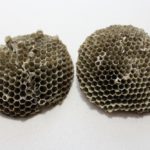
Identifying and Removing Wasp Nests in the Home
When it comes to stinging insects, one of the most common and familiar types out there is the wasp. Known for large nests and colonies, wasps are pests that can invade homes in large numbers if they aren’t properly handled, causing a variety of potential issues.
At Bug Busters, we’re here to help. Our wasp exterminator services are just one part of our comprehensive pest control solutions, offered on both a residential and commercial basis. Today’s blog will focus on everything you need to know about wasps – their nests and general habits, how to recognize allergic reactions to wasp stings, and how to safely remove a wasp’s nest if this becomes necessary.
Wasp Nests and Habits
Generally speaking, wasp nests found in homes will be located in the corners and small crevices. This is where wasps prefer to build nests, as the location keeps them safe and also allows them to reproduce.
If you locate such a nest in your home, we highly recommend calling our exterminators immediately. Wasps can be dangerous, particularly if you have children in the home, and should be handled by professionals whenever possible.
Allergic Reaction
While you’re waiting for our team to arrive, or if you’ve discovered a wasp nest due to someone in your home being stung, it’s vital to understand the potential signs of allergic reaction to wasp stings. Such signs may include major swelling, nausea, fever and hallucinations, including certain cases severe enough for hospitalization. Call 911 immediately if you believe someone in your home is having a severe allergic reaction to a wasp sting.
One more important point here: Unlike bees, which can only sting once, wasps can sting over and over without damaging their stingers. This is another reason why removing their nests promptly is so important.
Safe Removal
Once again, we highly recommend leaving wasp nest removal to our professional pest control experts. If you absolutely must attempt this on your own, however, it’s vital to take the proper precautions.
For starters, you should cover as much of your body as possible – all of it, if you can, such as a bee suit or a related item. For another, approach the nest after dark, as this is the time when wasps are least active.
Finally, do not take a childish approach and “rush” the nest like a madman. Wasps are constantly acting to protect their queen, and they will respond angrily to such an attack, both charging at their attacker and spreading out in the area. Rather, slowly cover the nest with a garbage bag, then remove it from the location and dispose of it in a safe, sealed container.
For more on safe wasp identification and removal, or to learn about any of our other pest control services, speak to the staff at Bug Busters today.
